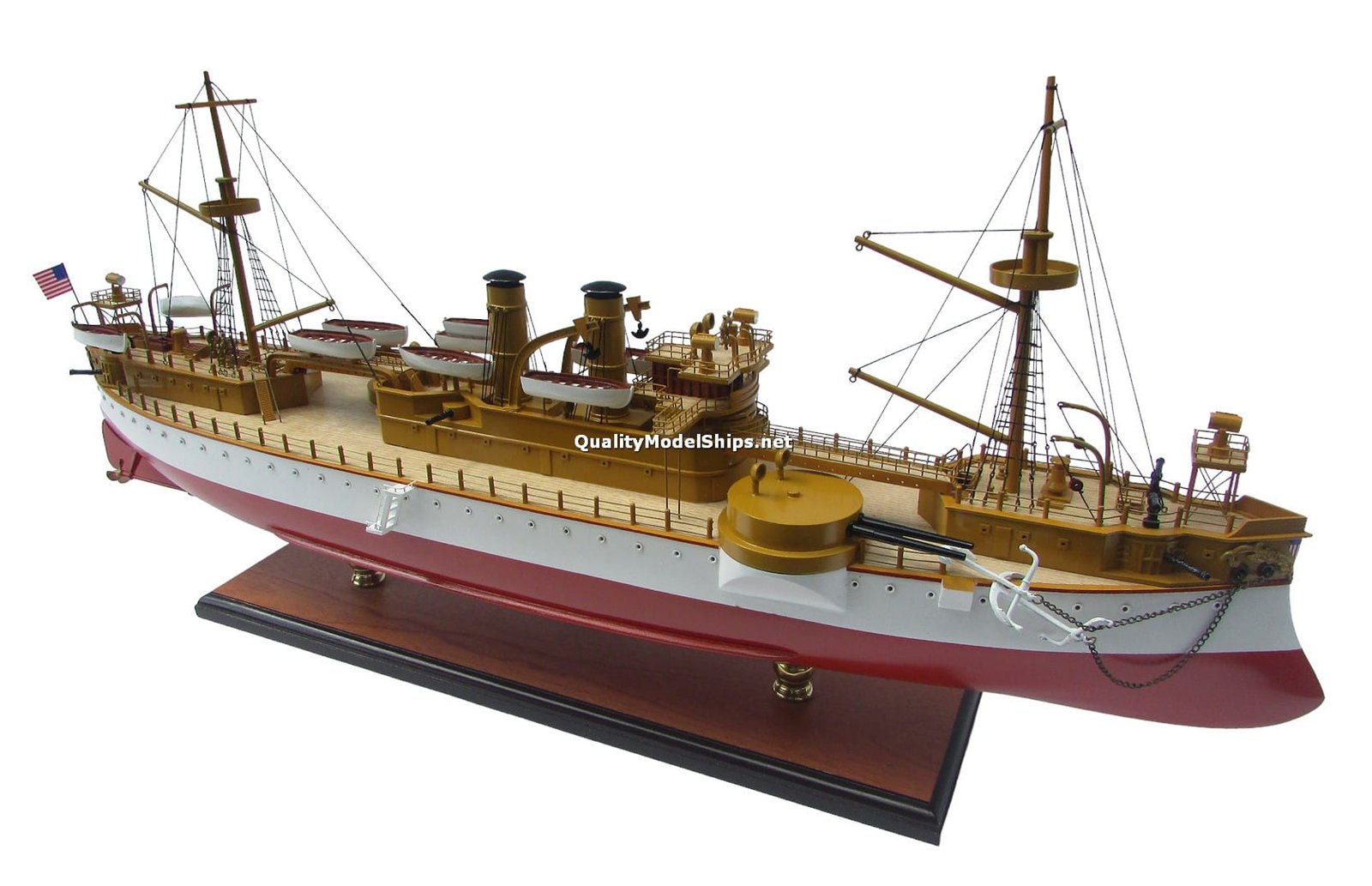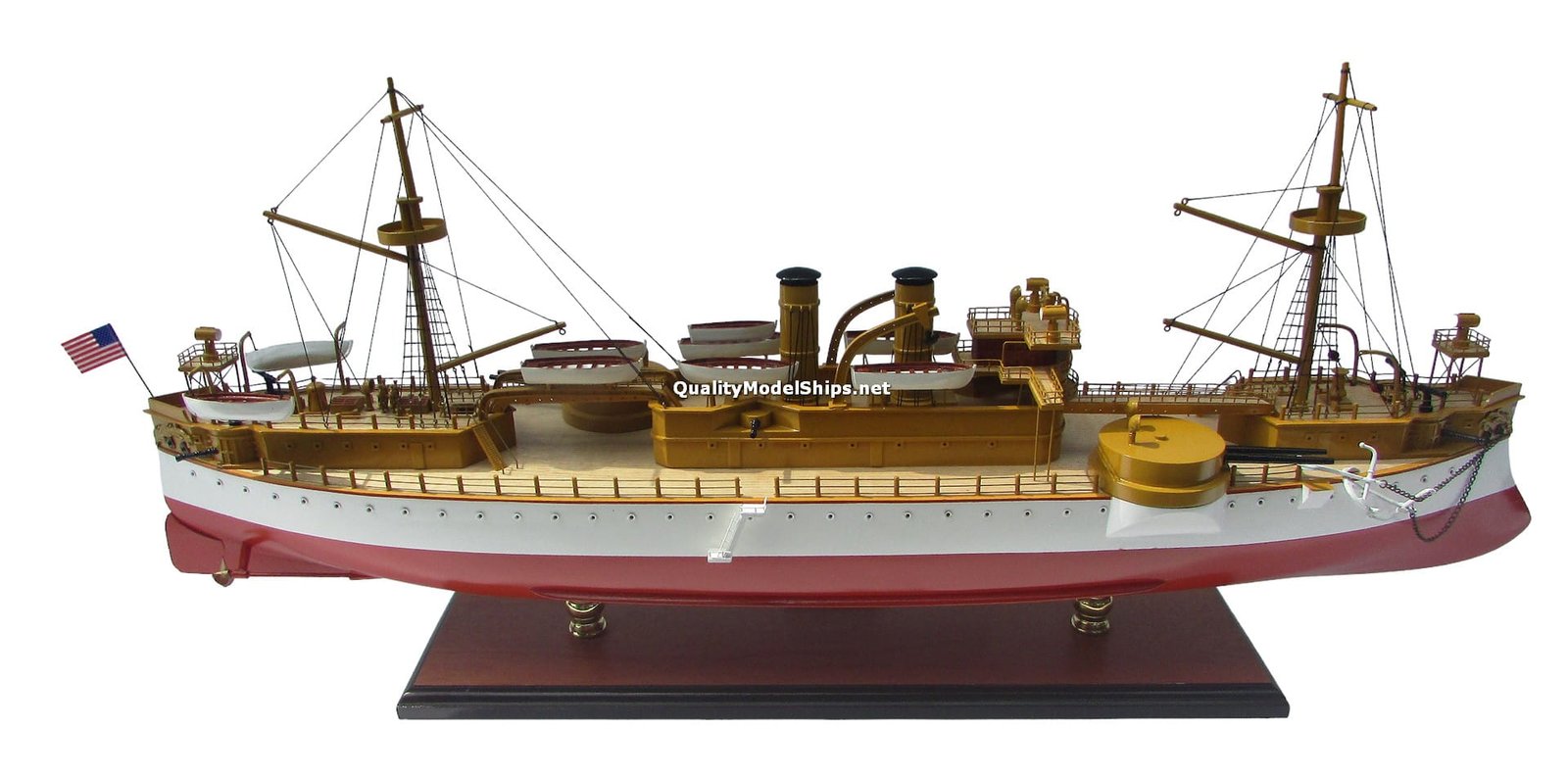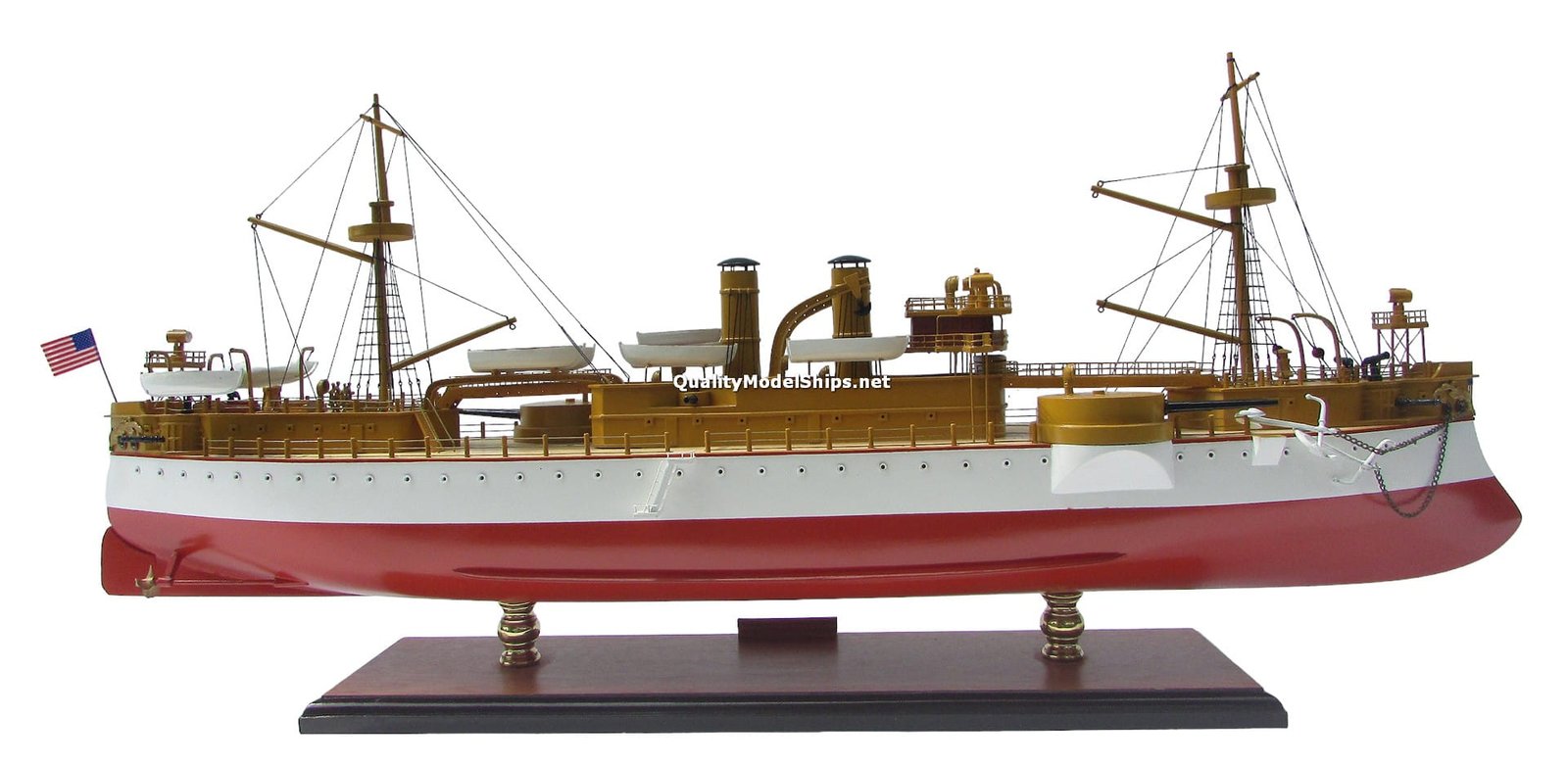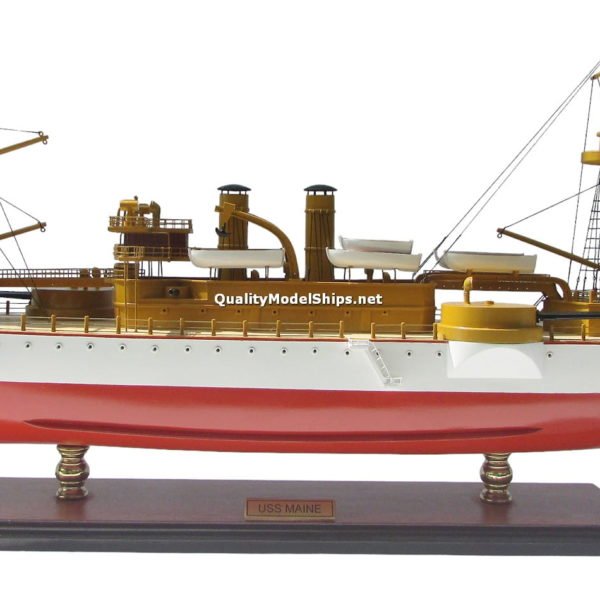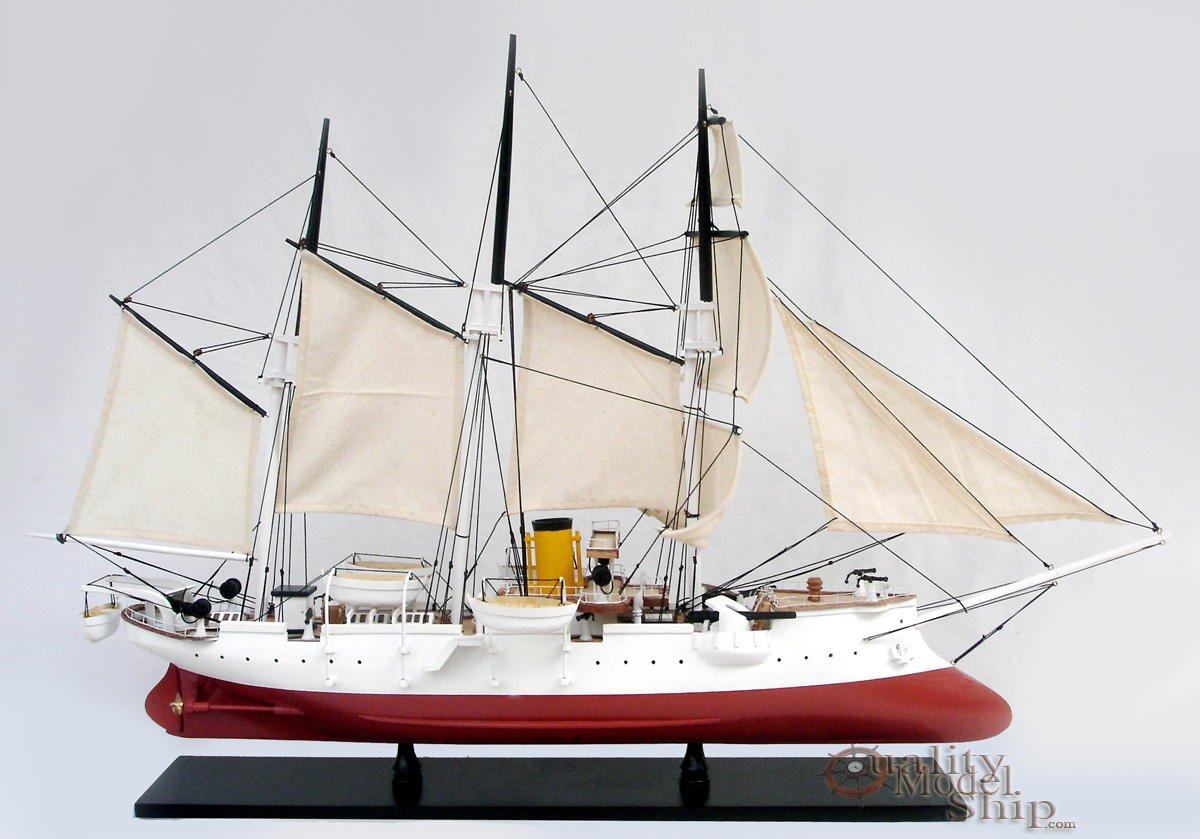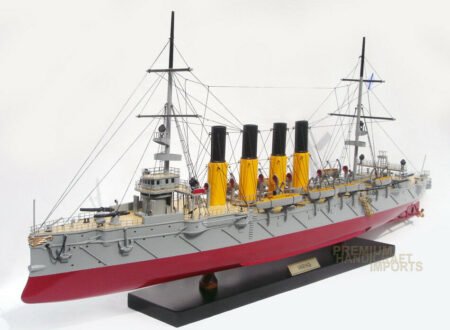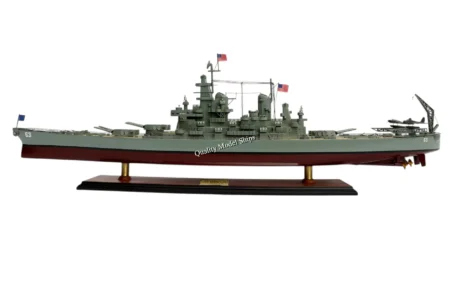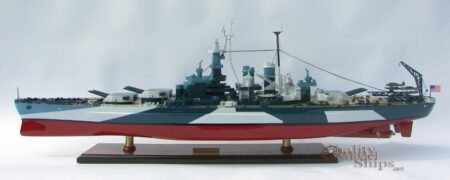Description
• The model is 100% scratch built with planks on frame construction method from the drawings.
• The hull is made of wood and painted. This model is not a kit and ready for display.
• Model comes with a display base and a brass name plate as shown photos.
• Specifications approximate: 31.49L x 6.29W x 13.77H (inch) or 80L x 16W x 35H (cm)
• Brand new product.
• Item ship from Houston Texas by Standard shipping USPS/ UPS/ FedEx ground
• Buyer from Alaska, Puerto Rico or Hawaii please contact us for extra shipping cost.
• International buyer pays any duty/ import tax if any.
HISTORY
USS Maine (ACR-1) is an American naval ship that sank in Havana
Harbor during the Cuban revolt against Spain, an event that became a major political issue in the United States.
Harbor during the Cuban revolt against Spain, an event that became a major political issue in the United States.
Commissioned in 1895, this was the first United States Navy ship to
be named after the state of Maine. Originally classified as an
armored cruiser, she was built in response to the Brazilian
battleship Riachuelo and the increase of naval forces in Latin
America. Maine and her near-sister ship Texas reflected the latest
European naval developments, with the layout of her main armament
resembling that of the British ironclad Inflexible and comparable
Italian ships. Her two gun turrets were staggered en échelon, rather
than on the center line, with the fore gun sponsoned out on the
starboard side of the ship and the aft gun on the port side, with
cutaways in the superstructure to allow both to fire ahead, astern
or across her deck. She dispensed with full masts thanks to the
increased reliability of steam engines by the time of her
construction.Despite these advances, Maine was out of date by the time she entered service, due to her protracted construction period and changes in the role of ships of her type, naval tactics and
technology. It took nine years to complete, and nearly three years
for the armor plating alone. The general use of steel in warship
construction precluded the use of ramming without danger to the
attacking vessel. The potential for blast damage from firing end on
or cross-deck discouraged en échelon gun placement. The changing
role of the armored cruiser from a small, heavily armored substitute
for the battleship to a fast, lightly armored commerce raider also
hastened her obsolescence. Despite these disadvantages, Maine was seen as an advance in American warship design.Maine is best known for her loss in Havana Harbor on the evening of
15 February 1898. Sent to protect U.S. interests during the Cuban
revolt against Spain, she exploded suddenly, without warning, and
sank quickly, killing nearly three quarters of her crew. The cause
and responsibility for her sinking remained unclear after a board of
inquiry investigated. Nevertheless, popular opinion in the U.S.,
fanned by inflammatory articles printed in the “yellow press” by
William Randolph Hearst and Joseph Pulitzer, blamed Spain. The
phrase, “Remember the Maine! To hell with Spain!”, became a rallying cry for action, which came with the Spanish–American War later that year. While the sinking of Maine was not a direct cause for action, it served as a catalyst, accelerating the approach to a diplomatic impasse between the U.S. and Spain.The cause of Maine’s sinking remains a subject of speculation. In 1898, an investigation of the explosion was carried out by a naval
board appointed under the McKinley Administration. The consensus of the board was that Maine was destroyed by an external explosion from a mine. However, the validity of this investigation has been
challenged. George W. Melville, a chief engineer in the Navy,
proposed that a more likely cause for the sinking was from a
magazine explosion within the vessel. The Navy’s leading ordnance
expert, Philip R. Alger, took this theory further by suggesting that
the magazines were ignited by a spontaneous fire in a coal bunker.
The coal used in Maine was bituminous coal, which is known for
releasing firedamp, a gas that is prone to spontaneous explosions.
There is stronger evidence that the explosion of Maine was caused by an internal coal fire which ignited the magazines. This was a likely
cause of the explosion, rather than the initial hypothesis of a
mine. The ship lay at the bottom of the harbor until 1911. A
cofferdam was then built around the wreck. The hull was patched up
until the ship was afloat, then towed to sea and sunk. The Maine now
lies on the sea-bed 3,600 feet (1,100 m) below the surface.
be named after the state of Maine. Originally classified as an
armored cruiser, she was built in response to the Brazilian
battleship Riachuelo and the increase of naval forces in Latin
America. Maine and her near-sister ship Texas reflected the latest
European naval developments, with the layout of her main armament
resembling that of the British ironclad Inflexible and comparable
Italian ships. Her two gun turrets were staggered en échelon, rather
than on the center line, with the fore gun sponsoned out on the
starboard side of the ship and the aft gun on the port side, with
cutaways in the superstructure to allow both to fire ahead, astern
or across her deck. She dispensed with full masts thanks to the
increased reliability of steam engines by the time of her
construction.Despite these advances, Maine was out of date by the time she entered service, due to her protracted construction period and changes in the role of ships of her type, naval tactics and
technology. It took nine years to complete, and nearly three years
for the armor plating alone. The general use of steel in warship
construction precluded the use of ramming without danger to the
attacking vessel. The potential for blast damage from firing end on
or cross-deck discouraged en échelon gun placement. The changing
role of the armored cruiser from a small, heavily armored substitute
for the battleship to a fast, lightly armored commerce raider also
hastened her obsolescence. Despite these disadvantages, Maine was seen as an advance in American warship design.Maine is best known for her loss in Havana Harbor on the evening of
15 February 1898. Sent to protect U.S. interests during the Cuban
revolt against Spain, she exploded suddenly, without warning, and
sank quickly, killing nearly three quarters of her crew. The cause
and responsibility for her sinking remained unclear after a board of
inquiry investigated. Nevertheless, popular opinion in the U.S.,
fanned by inflammatory articles printed in the “yellow press” by
William Randolph Hearst and Joseph Pulitzer, blamed Spain. The
phrase, “Remember the Maine! To hell with Spain!”, became a rallying cry for action, which came with the Spanish–American War later that year. While the sinking of Maine was not a direct cause for action, it served as a catalyst, accelerating the approach to a diplomatic impasse between the U.S. and Spain.The cause of Maine’s sinking remains a subject of speculation. In 1898, an investigation of the explosion was carried out by a naval
board appointed under the McKinley Administration. The consensus of the board was that Maine was destroyed by an external explosion from a mine. However, the validity of this investigation has been
challenged. George W. Melville, a chief engineer in the Navy,
proposed that a more likely cause for the sinking was from a
magazine explosion within the vessel. The Navy’s leading ordnance
expert, Philip R. Alger, took this theory further by suggesting that
the magazines were ignited by a spontaneous fire in a coal bunker.
The coal used in Maine was bituminous coal, which is known for
releasing firedamp, a gas that is prone to spontaneous explosions.
There is stronger evidence that the explosion of Maine was caused by an internal coal fire which ignited the magazines. This was a likely
cause of the explosion, rather than the initial hypothesis of a
mine. The ship lay at the bottom of the harbor until 1911. A
cofferdam was then built around the wreck. The hull was patched up
until the ship was afloat, then towed to sea and sunk. The Maine now
lies on the sea-bed 3,600 feet (1,100 m) below the surface.
Return/ Exchange Policy
• For some reasons if you wish to return the item, please consider not to open the item out of the wooden crate or open the item out of the styrofoam. You can open the carton box, lift up the whole wooden crate and check the models that are packed in wooden crate. For the items are packed in solid styrofoam, you can open the carton box, lift up the top part (styrofoam lid) and check the model. Please do not cut any strips or take the model out of the wooden crate or out of the styrofoam. It is very risky of damages to the item when you return if you open or remove the item out of the wooden crate or the styrofoam. We only accept and refund in full when the model return in good shape.
• Returned or exchanged products must be in brand-new, original condition, and have all original packaging, materials, and accessories
• Buyer pays return shipping.









